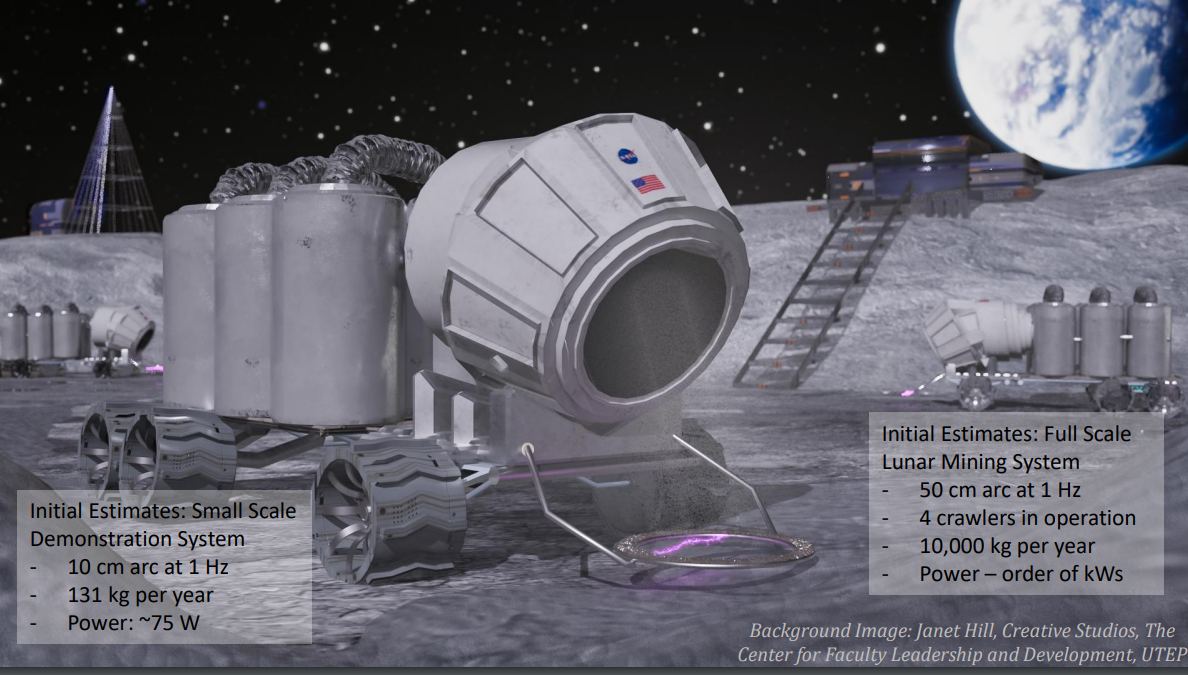Lately, plenty of ideas have been floating around for methods to mine the Moon. That is undoubtedly partly due to the growing enthusiasm for Artemis, NASA’s lunar exploration program, and its planned support for a long-term human presence on the Moon. But what would make the best technique to get valuable material off the lunar surface? How about zapping it with lightning? That is the idea behind a NASA Institute for Advanced Concepts grant given to Dr. Amelia Grieg of the University of Texas at El Paso. And it seems to work.
The technique, formally known as “ablative mining,” is similar to other methods we’ve covered before, such as redirecting the Sun to vaporize lunar regolith and capture it in a collection system. However, those experiments had downsides, such as leaving a blackened layer of melted regolith on the surface.
Ablative techniques don’t suffer from the same downsides. The underlying idea is to put a circle that can hold two electrodes on either side and force enough charge through the electrodes to create an arc between them. Any regolith in the path of the arc (basically lightning) would immediately be ionized and turn into its constituent ions (iron, oxygen, and silicon being three of the most common).
Credit – EMu Aerospace YouTube Channel
The electrodes themselves would be attached to a rover with specially designed optical systems that focus the flow of free-standing ions into a narrow channel. Those free-flowing ions are then subjected to magnetic fields, which separate heavier ions from lighter ones. Each is ushered into a container specially designed to hold that specific ion. Full containers can easily be offloaded from the ionizing rover and transported back to a centralized base, while the rover can also be loaded with a new container.
That all sounds relatively simple, and in concept, it is. It uses many of the same underlying techniques of other lunar regolith mining ideas. However, the ablation process, though energy-intensive, is likely one of the most effective ways of separating the lunar regolith into its constituent components.
Just how effective it would be was the subject of the work as part of the NIAC grant. Dr. Grieg purchased some regolith simulant and stuck a couple of electrodes in it. After some tinkering, she is now able to consistently produce an arc between the two electrodes through regolith simulant, thereby ionizing part of the regolith. From publicly available sources, it’s unclear how much of that regolith simulant was turned into usable ions, but that seems like a viable next step in the research pipeline for the project, as Dr. Grieg mentions in an explanatory video for NIAC.
She also estimates that it would be possible to mine around 10,000 kgs of regolith per year with four full-sized rovers. That could be enough to support a small base with all the raw materials it needs on certain parts of the Moon (such as the south pole, where there are significant water reserves).
For now, the project doesn’t appear to have received a Phase II NIAC grant, and Dr. Greig seems to have joined Blue Origin as a manager, but it’s unclear if she’ll be able to continue research into her idea. But part of what NIAC does is it develops ideas to a certain point, and one of the things we pride ourselves on here at UT is bringing people’s attention to unique ones. Shocking the lunar surface with lightning certainly passes that test.
Learn More:
A. Greig – Ablative Arc Mining For In-situ Resource Utilization
UT – What is ISRU, and How Will it Help Human Space Exploration?
UT – What Role Will NASA Play In Developing ISRU On The Moon?
UT – ESA Wants Your Ideas for Living off the Land… on the Moon
Lead Image:
Artist’s depiction of a rover with an ablative mining system on it.
Credit – Janet Hill / Creative Studios / UTEP Center for Faculty Leadership and Development

